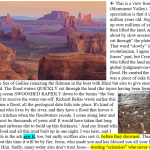It seems that every week a new supposed earth-like planet is reported in the news, with some recent articles even claiming that there are several billion similar planets in our galaxy alone.
But how much do we really know about these other systems?
A recent report by the Harvard-Smithsonian Center for Astrophysics reveals that the closest earth-like planet is likely within 13 light-years.
While this might seem close in astronomical terms, let’s take a look in practical, easy-to-understand terminology:
Our fastest spacecraft to date travels at speeds of around 40,000 MPH. So let’s use the Rives’ Theory of Relativity, which, relative to our fastest spacecraft, calculates the amount of time required to reach a known distance.
Taking a ride at 40,000 MPH to this supposedly “close” planet… would take us over 200,000 years. With the limited technology we have for observing details at this distance, the most that could be expected is that the size and composition might be similar to earth.
However, this says nothing about the atmosphere, liquid water, or any of the hundreds of finely tuned factors that allow us to survive here on earth.
I’m David Rives…
Truly the Heavens Declare the Glory of God.
LIKE David’s FB page here: http://www.facebook.com/DavidRivesMinistries
FOLLOW us on Twitter: http://twitter.com/TheDavidRives
VISIT our official website for tons of free information: http://www.davidrivesministries.org
David Rives MUSIC: http://www.davidrivesmusic.com
For the TBN show “Creation in the 21st Century”: http://www.creationinthe21stcentury.com





